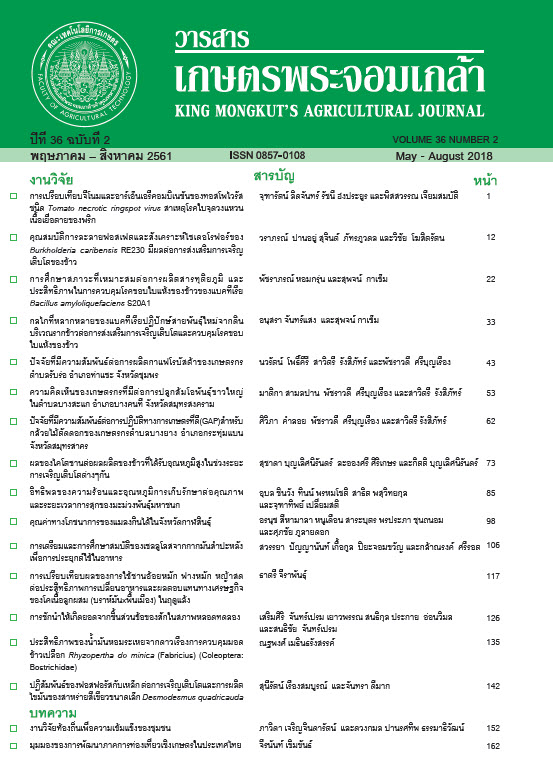การคัดเลือกแบคทีเรียผลิตเอนไซม์เซลลูเลสและประสิทธิภาพ ในการย่อยสลายวัสดุลิกโนเซลลูโลส
Main Article Content
บทคัดย่อ
Our main purposes were to screen cellulase producing bacteria (CPB) from sugarcane rhizospheres and agricultural waste and to investigate the diversity and ability of cellulase production of bacteria,
including potential of cellulase producing bacteria on cellulose decomposition within microcosm.
The results revealed that 100 isolates of bacteria were enabled cellulase production but only 25 isolates exhibited high cellulase producing activity with hydrolytic capacity (HC value › 3) testing on carboxy methyl cellulose (CMC) agar plate. The dendrogram analysis of high cellulase producing bacteria was characterized by using their nitrogen, carbon source utilization, morphology data and antibiotic resistance data and also evaluated by UPGMA analysis. The bacterial isolates could be categorized into two clusters with a maximum similarity value of 50%, indicated diverse bacteria. The bacterial isolates were detected
cellulase activity by carboxymethylcellulase activity analysis. is was found That cellulase producing activity
in the range from 0.0509-0.0702 U/ml.The bacterial isolate no.M008 showed the highest of cellulose
producing activity at 0.0702±0.0027 U/ml, respectively. In this case, the bacteria isolate M008 was selected
to study lignocellulose decomposition within microcosm. The results indicated that oil palm empty fruit
bunch is the most decomposed at 35°C for 30 days, then, sugarcane leaves and rice straw, respectively.
It could be identified with DNA sequencing analysis at 16S rDNA gene as Enterobacter sp. at 99% similarity.
Article Details
วารสารเกษตรพระจอมเกล้า


